#ignazio florio jr
Text
Franca Florio - The “Star of Italy”
She was nicknamed by her admirers “The Queen of Palermo”, the german Kaiser Wilhelm II called her “The Star of Italy” and writer and poet Gabriele D'Annunzio described her as “a unique woman. A creature whose every movement possesses a divine rhythm” or simply “L’Unica”. She was born Francesca Paola Jacona della Motta dei baroni di San Giuliano, but is known in prosperity as Donna Franca Florio.

The elegant, cultured, lively and intelligent Donna Franca Florio quickly dazzled society after her marriage to entrepreneur and shipowner Ignazio Florio Jr, one of the wealthiest men in Italy. Tall and slender with a 22-24 inch waist and with brilliant green eyes and raven black hair, she was a captivating beauty (if slightly unconventional due to her somewhat dark skin in a time where porcelain skin was valued, even undergoing a painful liquid enmael treatment in Paris in an effort to make her skin paler)

Her wardrobe and sense of style was legendary, with the great fashion designer Jean Philippe Worth calling her the best dressed and most beautiful woman in Italy. Her clothes from the greatest fashion houses and jewelry from Cartier and Lalique were custom made for her, and the outfits worn during her public appearances were lovingly described in papers and magazines. Her jewelry, including a priceless pearl necklace made out of 365 pearls, is said to have outshone even those of the Queen of Italy herself, and was generously given to her by her husband, it is said, as apologies for his frequent infidelities. She did however stop wearing earrings, as they were said to take away from the beauty of her face.

There was however much more to her than good looks and sense of style that made her such a celebrated figure. She was a woman of great intelligence, charisma and artistic taste, and was fluent in german, french and english as well as italian. She had a great ability to make connections with people, which was to great benefit for her entrepreneur husband. She was admired by the Intelligentsia, the artists and intellectuals of her time. Despite her extravagant money spending, she was gifted with great humanity and generosity. She promoted several nurseries, offered trousseaus to orphan girls, made sure her servants children got gifts on christmas, and personally nursed the wounded, and even adopted an orphan, of Messina after an earthquake devastated it in 1908.
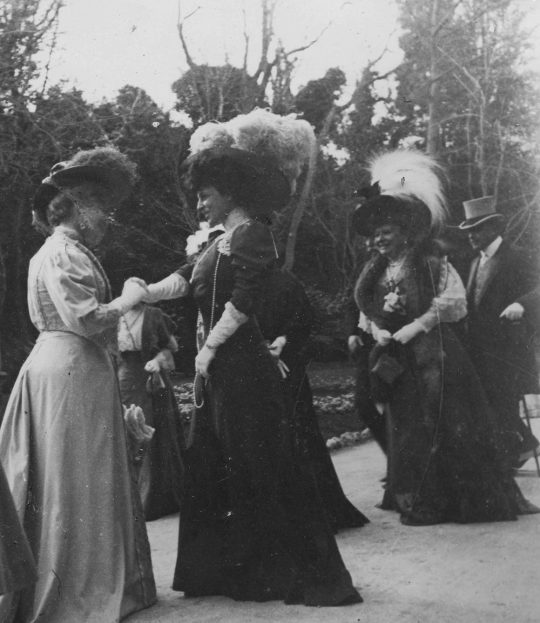
Emperor Franz Josef of Austria was also one of her royal admirers, gifting her with a trumpet for her car specifially made to announce his arrival, causing people to stop and salute the car thinking it was the Emperor himself. Also women admired her, such as Queen Elena of Italy, who she was also a lady-in-waiting to, and writers Matilde Serao and Anna Maria Neera Zuccari, the latter whom held her in such high esteem she would consult her for opinions on her literary work. One polish princess Ghiza was allegedly so enchanted with her after meeting her once at a hotel, she declared her love for her in a long letter and continued to admire her from afar.
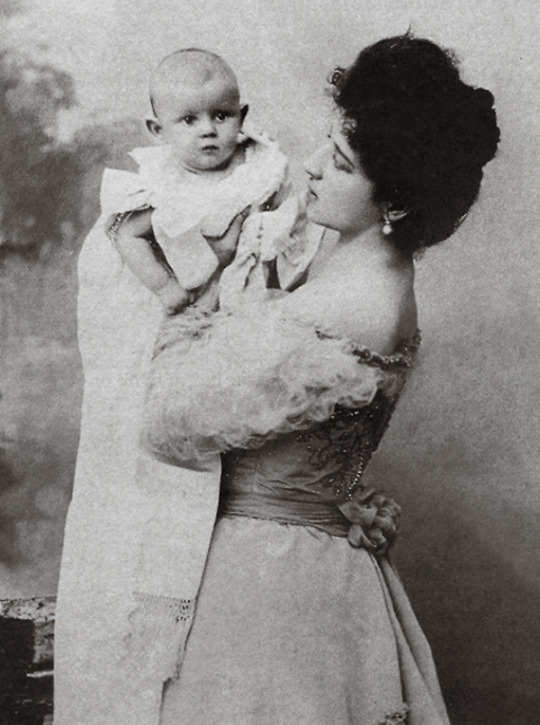
Despite all this attention, she never had any affairs and remained loyal to her husband and family. Beneath the glamourous facade she also suffered great personal anguish with three of her five children dying in their childhood, her husband’s cheating and scandal mongering, and eventually the Florio family’s economic collapse. After the bankruptcy of Ignazio Florio Jr., Donna Franca retreated to the Villa Silviati, belonging to the husband of her daughter Costanza Igiea Florio. She died there on 10 November 1950.
Under her and her husband’s patronage, Palermo blossomed into a cosmopolitan city and their mark is still visible to this day.

#historicwomendaily#history crushes#franca florio#women in history#belle epoque#the belle epoque#donna franca florio#the gilded age#vintage photography#beautiful women in history#edwardian#edwardian era#fin de siecle#italian history#beautiful women#icon#icons#fashion#hulderposts#beauty#socialites#history of italy
92 notes
·
View notes
Photo
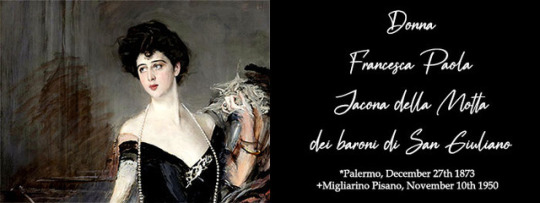


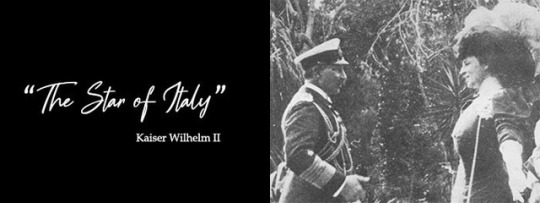

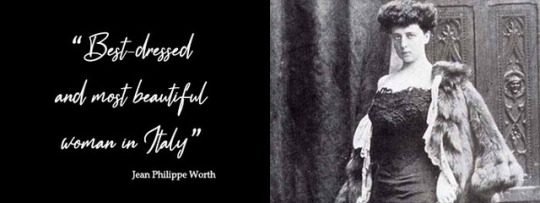
Francesca Paola Jacona, better known as Donna Franca Florio, was born in Palermo on December 27th 1873. She was the only daughter of Baron Pietro Jacona di San Giuliano and Costanza Notarbartolo di Villarosa. Her mother came from an ancient but already decadent Sicilian noble family.
On February 11th 1893, and after a long courtship, a 19 years old Franca married Ignazio Florio Jr. Her family had been against this union since the man was a notorious womanizer and would not stop even after marrying. It was a private ceremony, nothing too sumptuous since her husband had lost his father two years prior. Franca then moved to Villa All’Olivuzza, where her mother-in-law, Giovanna D’Ondes Trigona, and her 10 years old brother-in-law, Vincenzo, already lived. She had to get used to her new family’s splendour, but she soon felt at ease and developed refined and bizarre tastes. In her house in Palermo, she brought two grivets, Fitty and Fufi. The two pestiferous monkeys once caused a fire that destroyed a precious XVI century lace curtain, one of Florio Family’s treasures. It is said the monkeys wanted to imitate their masters and tried to smoke. They stroked the matchsticks on the walls and succeeded in lightning them, but then everything got out of control.
Ignazio Florio Jr wasn’t a nobleman, but was incredibly rich. The Florio family originally came from Calabria and settled in Sicily in 1783 after a terrible earthquake had damaged their hometown (Bagnara Calabra, province of Reggio Calabria). In three generations, the Florio family accumulated an enormous wealth. Ignazio Jr, their heir, owned the Cantine Florio (Florio winery, the first one to produce the famous Marsala wine), the majority of the Sicilian tonnare (factories that produced canned tuna, and for the first time it was tuna in oil instead of salted tuna), the Oretea foundry, the Banca Florio (Florio Bank, previously owned by the Rothschild family), a share of the Anglo-Sicilian Sulphur Company, and the majority of the Navigazione Generale Italiana (a shipping company operating in the Mediterranean Sea, North America, India and Far East) capital.
On November 24th 1893 Franca gave birth to her first child, Giovanna. Despite not being the wished for heir, the baby girl was loved by her family, nonetheless. Donna Franca wasted no time after her daughter’s birth and resumed attending various social gatherings. She always was at the centre of the attention, and her looks never ceased to make headlines. Moreover she was considered incredibly beautiful with her green eyes, tall stature (173 cm) and amber skin. Franca Florio wore only dresses especially designed for her by the French stylist Jean Philippe Worth. Even her jewels were customized for her by famous jewelry brands like Cartier or Lalique. She stopped wearing earrings after Gabriele D’Annunzio advised her to since (he declared) a pendant distort her features. Among her gems, there was, in particular, a famous necklace made of 365 pearl beads. Even Queen Margherita of Italy was envious of this collier since she couldn’t afford such incredible and expensive piece of jewelry.
At the time, many celebrities visited Palermo, and among them Guy de Maupassant, Richard Wagner, Giacomo Puccini, Gabriele D’Annunzio and Oscar Wilde (whose scandalous lifestyle and recent accuse of sodomy couldn’t secure him a warm welcome). On 1896 Kaiser Wilhelm II and his family arrived in Palermo. The deep bond between the German Emperor and the Florios will last until the First World War, which will lead to the Hohenzollern dinasty’s decline.
Among her royal admirers there was also Franz Joseph of Austria. The Emperor gave Donna Franca a trumpet for her car as a present. She used to ring it while driving through Vienna’s streets and people stopped and saluted the car thinking it was the Emperor.
In their mansion, the Florio couple entertained many important guests, like the aforementioned Hohenzollern family, but also King Edward VIII and Queen Alexandra of Great Britain, Tzarina Alexandra Feodorovna and Grand Duke Kirill Vladimirovich of Russia, Archduke Franz Ferdinand of Austria and Prince Philipp von Sachsen-Coburg und Gotha.
On April 9th 1898, finally, the heir was born. The birth of little Ignazio, fondly known as Baby Boy, strengthened the relationship between the Florio couple.
On December 19th 1900, before a stand out audience (among them many international newspapers like New York Times, Le Figaro and Daily Mail) , the hotel Villa Igiea was inaugurated. It was originally a private house bought by the Florio, who entrusted it to Palermitan architect Ernesto Basile. He transformed it into an Art Nouveau jewel, and it still is one of the most beautiful Italian hotels. Ignazio and Franca had in there their own private apartment, and it is where on June 4th their third child, Igiea Costanza, was born. 1900 was a good year for Donna Franca since she was also appointed as Queen Margherita’s lady-in-waiting.
Ignazio’s adultery was a constant distress for his wife, but nothing could compare to the grief derived from their children’s sorrowful fate. Giovanna died of meningitis (or tuberculosis) in 1902, she was 9. The year after, Little Ignazio followed his sister at the tender age of 5. The same year, Giacobina was born, but the baby girl only lived for a few hours.
On 1909 the last of Florio children, Giulia, was born. Unfortunately, Florio family’s crisis and downfall was approaching. The Florio empire was so vast it became hard to manage, especially with all the competitors from Northern Italy. Ignazio Jr. didn’t think about diversifying his business’ interests in new markets nor invest in the new technologies. Moreover the Florios maintained their extravagant way of life and accumulated huge debts that led to the fact that all the Florio companies either were sold or disappeared.
In 1924 Ignazio had to sell Villa Florio all'Olivuzza and along with his wife and daughter Giulia moved to Rome in his daughter Igiea’s house (in 1921 she had married Duke Averardo Salviati). Between 1925 and 1935 the economic collapse deprived Ignazio Jr of all his assets. Donna Franca was forced to sell her jewels (included the pearl necklace) and the family’s furniture and real estate were auctioned in Palermo. Ignazio sold all the companies and the whole family patrimony to pay his debts to the last penny, before retiring to private life. The Florio couple got closer with all the aversities and supported each other until the end.
Donna Franca died on November 10th 1950 in Igiea’s villa in Migliarino Pisano, tended by her daughters. She’s buried in the Cemetery of Santa Maria di Gesù, Palermo. After her death, Ignazio returned to Palermo where he died on September 19th 1957.
Igiea had 5 children and died in 1974. Her sister Giulia married in 1939 in Rome Marquis Achille Afan de Rivera Costaguti. During raid of the Ghetto of Rome in 1943, despite being a committed fascist, the Marquis and his wife hid in their palace (which partly was inside the ghetto’s area) and later help to run away from Rome 16 Jewish families. When German soldiers arrived at the palace to inquire whether it was true the Afan de Rivera family was hiding Jews, Don Achille showed up in full fascist uniform. He swore his loyalty to the Fascist cause and declared there were no Jews in his house. As for Giulia, she was threatened by group of fascists who wanted to know if there were Jews in her house. She paid them a huge sum (50000 lire) for their silence. For these reasons, in 2002, the Marquises were posthumously appointed Righteous Among the Nations. Since her uncle Vincenzo didn’t have any children from both his two wives, Giulia was the last of the Florios. She died in 1989 in Rome.
#women#women history#historical women#history#sicily#franca florio#ignazio florio jr#giulia florio#igiea costanza florio#Achille Afan de Rivera Costaguti#righteous among the nations#people of sicily#women of sicily#contemporary sicily#palermo#historyedit#province of palermo#myedit
13 notes
·
View notes
Photo










PALERMO ARENELLA - I QUATTRO PIZZI (CASA FLORIO)
Subentrato a suo padre, Ignazio Florio Jr. si trovò impreparato a gestire l’enorme patrimonio familiare ed i relativi debiti delle sue società che incominciavano ad aumentare esponenzialmente. Alcune scelte aziendali, come la fusione della banca di famiglia con la Società Generale di Credito Mobiliare che presto si riveleranno scelte errate. La Società Generale è infatti sull’orlo del fallimento e trascina le deboli finanze familiari in un baratro senza fine. Alle scelte non adeguate si aggiungeva un livello di vita che non considerava i problemi finanziari che la famiglia doveva affrontare (come ad esempio l’acquisto di 6 yacht in quattro anni). Ignazio Jr. vede presto crollare quell’impero che il padre e il nonno avevano costruito. Piano piano, le tonnare, le miniere, le navi e i relativi arsenali in cui erano state costruite e l’enorme patrimonio immobiliare passò in altre mani. Deluso e sconfitto, Ignazio Jr. si ritirò con la famiglia nell villino dei Quattro Pizzi, all’Arenella, ad est di Palermo. Il villino era un piccolo gioiello fatto costruire durante la ristrutturazione della loro Tonnara all’Arenella in stile Romantic Gothic di moda a metà del 1800. Vicenzo Florio, nonno dell’ Ignazio Jr. scelse quello stile influenzato dai numerosi contatti con che aveva con imprenditori anglosassoni, per cui nella facciata si riprendono temi e forme molto inglesi, ma nella gran sala del primo piano ecco ritornare i temi siciliani dei mosaici a sfondo dorato voluti da re Ruggero per le sue chiese e palazzi. Un ribadire ancora una volta come pur adottando forme e culture non dell’isola, il cuore restava solo e comunque, siciliano.
Ignazio Florio Jr. took over from his father and found himself unprepared to manage the enormous family wealth and the debts of his companies that were beginning to increase exponentially. Some corporate choices, such as the merger of the family bank with the Società Generale di Credito Mobiliare that will soon prove to be wrong choices. The General Society is indeed on the brink of bankruptcy and drags the weak family finances into an endless abyss. To the inadequate choices was added a level of life that did not consider the financial problems that the family had to face (such as the purchase of 6 yachts in four years). Ignazio Jr. soon sees that empire that his father and grandfather had built collapse. Slowly, the tonnare, the mines, the ships and the relative arsenals in which they had been built and the enormous real estate passed in other hands. Disappointed and defeated, Ignazio Jr. retired with his family in the villa of the Quattro Pizzi, at Arenella, east of Palermo. The cottage was a small jewel built during the renovation of their Tonnara at Arenella in a Romantic Gothic fashion style in the mid-1800s. Vicenzo Florio, Ignazio Jr.'s grandfather chose that style influenced by the numerous contacts he had with Anglo-Saxon entrepreneurs , for which very English themes and forms are reproduced in the façade, but in the large room on the first floor we return to the Sicilian themes of the golden background mosaics commissioned by King Roger for his churches and palaces. Once again, as though adopting forms and cultures not of the island, the heart remained only, and in any case, Sicilian.
40 notes
·
View notes
Photo

Donna Franca Florio, wife of entrepreneur Ignazio Florio Jr., welcoming Wilhelm II and Augusta Victoria, Emperors of Prussia, at her Villino Florio all’Olivuzza. Palermo, ca. 1908.
#women#history#history of women#historical women#women in history#franca florio#augusta victoria of prussia#wilhelm ii of prussia#contemporary sicily#women of sicily#people of sicily#palermo#province of palermo
1 note
·
View note